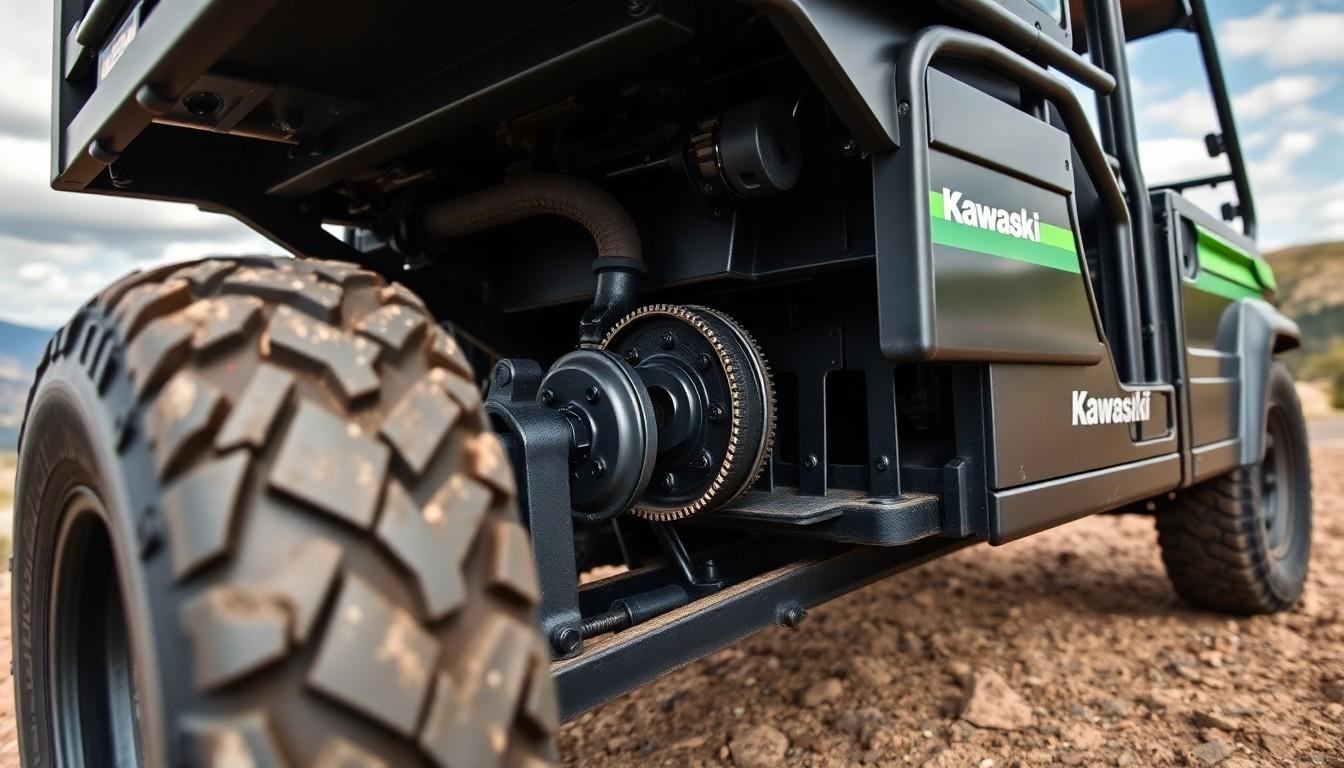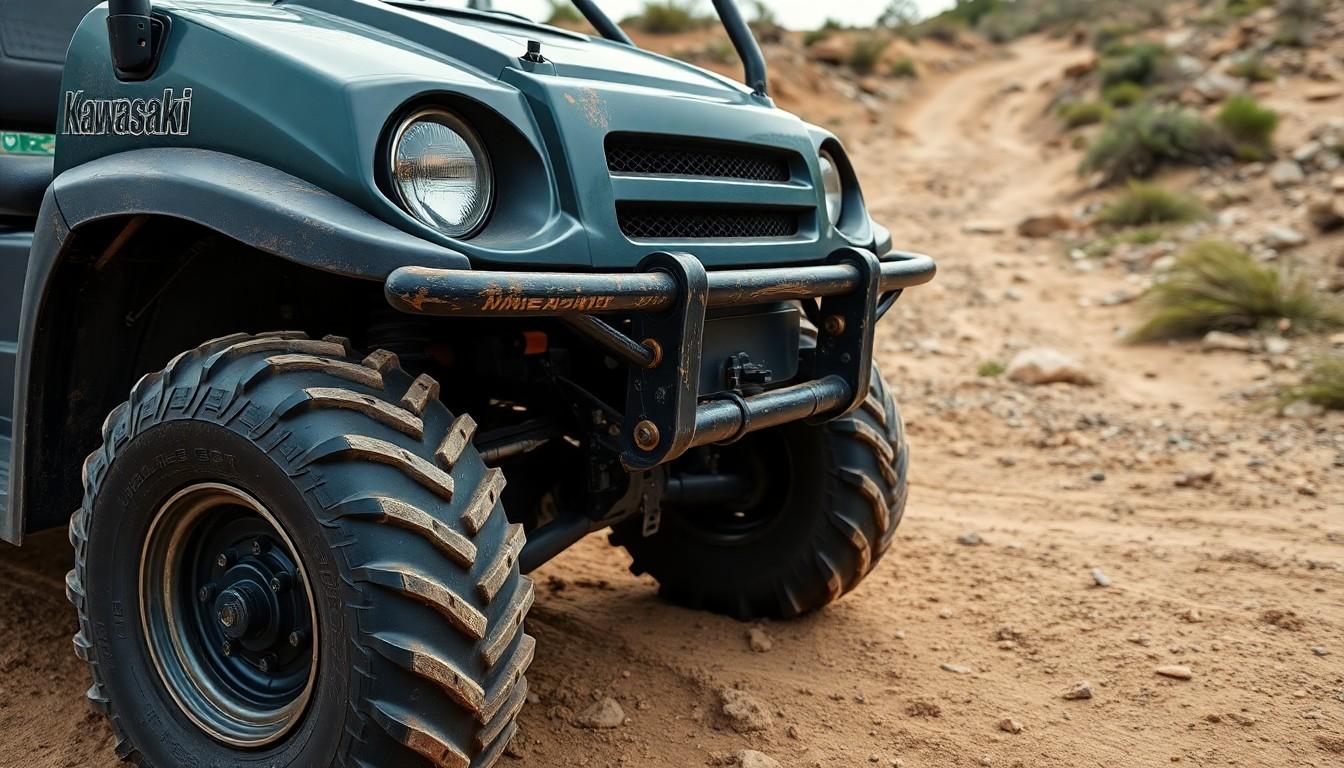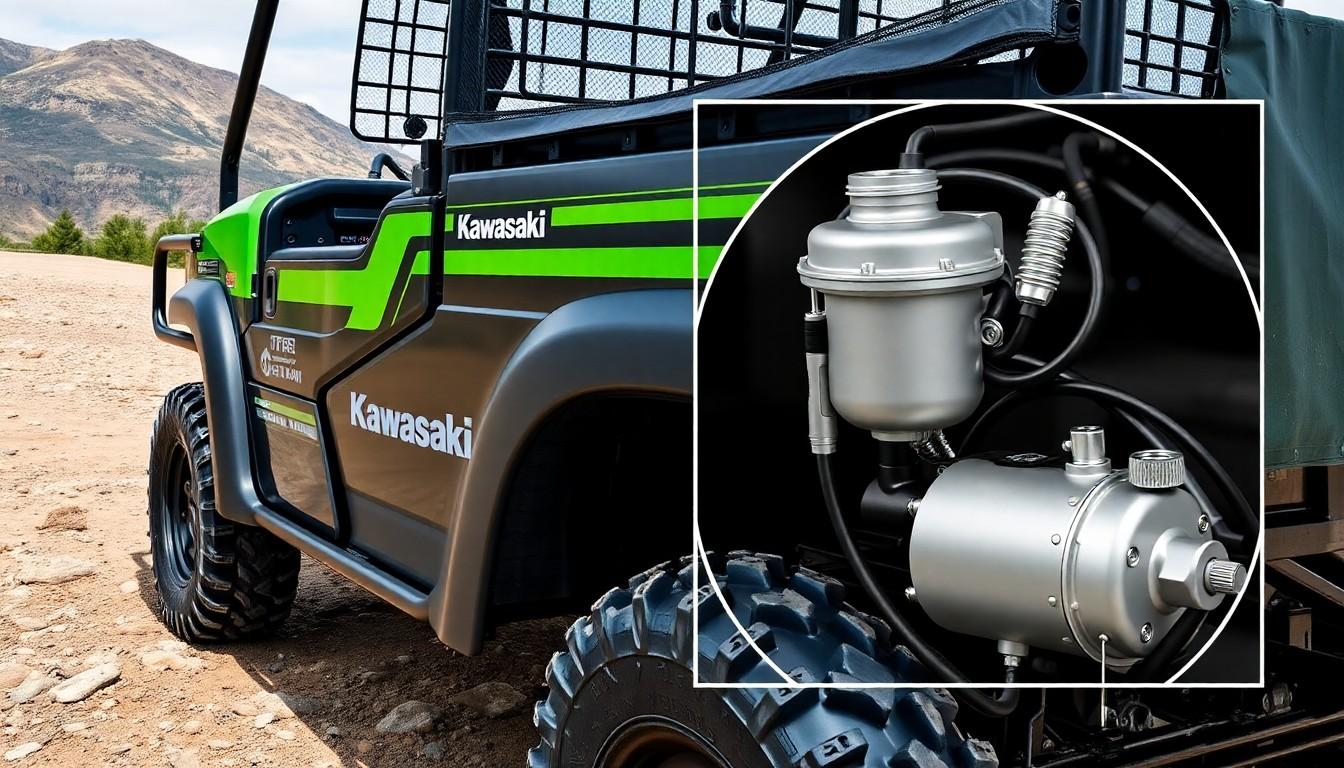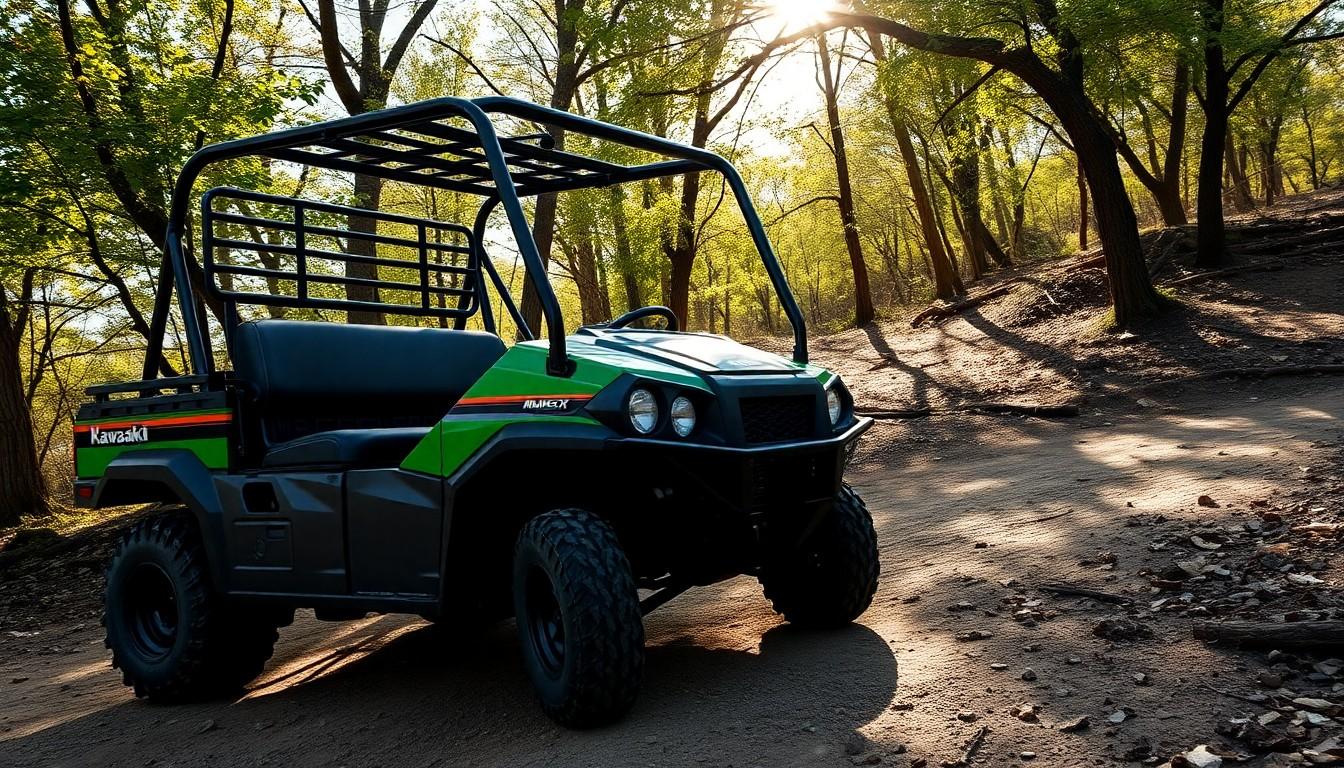Looking to troubleshoot your Kawasaki Mule SX issues? We’ve analyzed the most common problems owners face with these popular UTVs. From engine starting troubles to transmission hiccups, understanding these issues can save you time and frustration.
We’ve spent years working with Kawasaki Mule SX models and have identified recurring problems that affect performance and reliability. Whether you’re experiencing electrical failures, overheating, or unusual noises, our comprehensive breakdown will help you diagnose and address these concerns. Many issues can be resolved with simple maintenance, while others may require more extensive repairs or dealer attention.
Understanding the Kawasaki Mule SX Series
The Kawasaki Mule SX series represents a lineup of compact yet capable utility task vehicles (UTVs) designed for work applications across various terrains. Introduced as a smaller alternative to the full-sized Mule models, the SX series combines maneuverability with practical functionality. These vehicles feature a 401cc single-cylinder engine producing approximately 13.5 horsepower, making them suitable for property maintenance, light agricultural work, and recreational activities.
Kawasaki launched the Mule SX series with four primary models: the base SX, the SX 4×4, the SX 4×4 FI, and the SX 4×4 XC. Each variant offers different features to accommodate exact user needs, with the 4×4 models providing enhanced traction capability. The SX models typically include a tilting cargo bed with a 400-pound capacity, allowing users to transport materials and equipment efficiently across their property.
Most Mule SX vehicles come equipped with an automatic continuously variable transmission (CVT) that enables smooth operation without manual gear shifting. This transmission system connects to either a 2WD or selectable 4WD drivetrain depending on the model. The compact dimensions of the SX series (approximately 54 inches wide) make these vehicles particularly valuable for handling tight spaces where larger UTVs can’t access.
Even though their utility-focused design, Kawasaki hasn’t ignored comfort features in the Mule SX. The vehicles include bench seating for two passengers, automotive-style controls, and adequate storage compartments. Safety elements such as seat belts, roll-over protection structure (ROPS), and headlights come standard across the SX lineup, ensuring both functionality and protection during operation.
Common Engine Problems in Kawasaki Mule SX

Kawasaki Mule SX owners frequently encounter several engine-related issues that can affect performance and reliability. These problems range from starting difficulties to heat management concerns that impact the overall functionality of these utility vehicles.
Starting Issues and Stalling
Fuel injection systems in Kawasaki Mule SX models are particularly prone to starting difficulties, especially during hot weather conditions. The fuel system often loads up with excess fuel, causing rough starts accompanied by smoke until the engine runs smoothly. Dealers acknowledge this issue as relatively normal for these vehicles. To address this problem, applying a little throttle while in neutral typically helps manage the starting process and allows the engine to stabilize. Many owners report that once the initial rough start is overcome, the engine operation normalizes, but the recurring nature of this issue can be frustrating for daily users.
Overheating Concerns
Excessive heat generation ranks among the most important problems affecting Kawasaki Mule SX models. Heat radiates from three primary sources: the engine, exhaust system, and throttle body. This intense heat can reach unbearable levels, forcing operators to stop their activities and allow the UTV to cool down before continuing. The manufacturer rarely provides official answers for this heat management issue. As a workaround, many experienced owners install aftermarket heat shielding in both the bed and cab areas to mitigate the problem. Cold weather operation presents its own set of challenges, with moisture accumulation and freezing in the relief hose being common. This frozen moisture often leads to oil leakage through the oil plug. Dealers offer a winter update package that includes a specialized drain designed to allow moisture to escape, preventing these leaks in colder climates.
Electrical System Failures

Electrical problems plague many Kawasaki Mule SX owners, with dashboard malfunctions being particularly troublesome. These issues manifest in various ways that can affect both functionality and safety during operation.
Battery and Charging Problems
Battery-related issues frequently prevent Kawasaki Mule SX engines from starting properly. A weak or dead battery typically causes symptoms like clicking sounds when turning the key or intermittent starting failures. Owners should check that their battery maintains approximately 12.6 volts when fully charged using a multimeter for accurate readings. Clean, tight connections are essential for proper electrical flow throughout the system. Starter problems often trace back to insufficient battery power, making this component a critical first checkpoint when troubleshooting starting issues. Regular battery maintenance helps prevent unexpected failures during crucial work tasks.
Faulty Wiring and Connections
Loose connections and faulty wiring commonly cause dashboard malfunctions in the Mule SX. These electrical problems lead to erratic warning light behavior, with check engine and oil pressure indicators being most affected. Screens may go completely blank or display incorrect information, creating confusion for operators. Diagnosing these issues requires thorough inspection of all connection points throughout the electrical system. Corroded terminals, pinched wires, and water intrusion can all contribute to electrical failures. Defective dashboard units sometimes require complete replacement when wiring repairs don’t resolve the problem. Regular visual inspections of the wiring harness can help identify potential issues before they lead to complete system failure.
Transmission and Drivetrain Issues

Kawasaki Mule SX owners frequently encounter transmission and drivetrain problems that can significantly impact vehicle performance. Hard shifting, difficulty captivating gears, and general transmission malfunctions represent the most common complaints across multiple model years. These issues typically stem from worn components, inadequate maintenance practices, or inherent design limitations.
Belt Failures and Slipping
The CVT (Continuously Variable Transmission) system in Kawasaki Mule SX models can develop belt-related problems that affect overall drivetrain performance. Symptoms include unexpected slipping during acceleration, unusual whining noises, and complete belt failures that leave vehicles inoperable. Many owners report that improper belt tension contributes to premature wear, while debris accumulation inside the CVT housing accelerates deterioration. Regular inspection of belt condition reveals early warning signs such as cracks, glazing, or fraying edges that indicate replacement is necessary. Maintaining proper cleaning protocols for the CVT system extends belt life and preserves transmission functionality.
Differential and Transfer Case Problems
Differential and transfer case issues, though less frequently reported, create distinctive operational challenges for Mule SX operators. Unusual noises like grinding, clunking, or whining often indicate internal component wear or damage within these critical drivetrain systems. Fluid leaks appearing around differential housings or transfer cases signal seal failures that can lead to more severe damage if left unaddressed. Older Mule SX models demonstrate particular vulnerability to gearbox noise that worsens during turns or when shifting between 2WD and 4WD modes. Professional diagnosis becomes essential for these complex drivetrain components as improper repairs can cause cascading failures throughout the transmission system. Transfer case problems typically manifest as difficulty captivating four-wheel drive or inconsistent power delivery to all wheels during challenging terrain navigation.
Steering and Suspension Challenges

The Kawasaki Mule SX typically delivers reliable performance, but its steering and suspension systems can present challenges that affect ride quality and handling. These issues often become more apparent during extended use or when handling rough terrain at higher speeds.
Front End Alignment Problems
Front end alignment issues aren’t widely reported as a major concern for Kawasaki Mule SX models based on owner feedback. But, prolonged use on uneven terrain can gradually impact alignment, potentially leading to uneven tire wear and reduced steering responsiveness. Signs of misalignment include the vehicle pulling to one side during operation or a steering wheel that doesn’t return to center properly after turns. Regular inspection of tie rod ends, steering components, and wheel bearings helps maintain proper alignment and prevents these issues from developing into more serious problems.
Suspension Wear and Failure
The factory suspension on the Kawasaki Mule SX contributes to a notably rough ride, especially when traveling at higher speeds across uneven terrain. Factory shocks often lack the damping capabilities needed for comfortable operation in demanding conditions, resulting in excessive bouncing and diminished operator comfort. Many owners report feeling every bump and dip in the terrain, which not only affects comfort but can also impact vehicle control and stability. Over time, this constant strain accelerates wear on suspension components such as bushings, ball joints, and shock absorbers. Upgrading to aftermarket suspension components typically offers important improvements in both ride quality and component longevity, making it a popular modification among long-term owners who use their vehicles frequently on rugged terrain.
Fuel System Complications

The Kawasaki Mule SX experiences several fuel system issues that can significantly impact performance and reliability. These complications range from delivery problems to component failures that affect the vehicle’s operation during regular use.
Fuel Pump and Delivery Problems
Fuel pump failures represent one of the most important issues plaguing the Kawasaki Mule SX. Owners frequently report clogged fuel filters, damaged fuel lines, and complete pump malfunctions that create noticeable power loss during acceleration or hill climbing. Your Mule might struggle to maintain power when the fuel pump begins to fail, particularly when traversing challenging terrain. Serious cases often involve the fuel pump completely dying after being starved of fuel and overheating, leaving riders stranded mid-operation.
Preventative maintenance helps avoid these costly breakdowns. Using higher-quality fuel significantly reduces the risk of clogs and contamination throughout the system. Regular replacement of fuel filters and inspection of fuel lines for damage should become part of your routine maintenance schedule. Fuel additives offer additional protection, especially during storage periods when fuel degradation can damage system components.
Carburetor and Fuel Injection Issues
The Kawasaki Mule SX models primarily use fuel injection systems rather than carburetors, eliminating traditional carburetor-related problems. Many performance issues mistakenly attributed to fuel injection actually stem from other fuel system components. Faulty fuel injectors occasionally cause rough idling, hesitation during acceleration, or inconsistent power delivery during operation.
Fuel pressure regulator problems, though less common than pump failures, can also disrupt the Mule’s performance. Symptoms include engine sputtering, unexpected power surges, or difficulty maintaining consistent engine speed during operation. Comprehensive fuel system maintenance remains critical regardless of the exact components involved. Checking for fuel line obstructions, maintaining clean filters, and using quality fuel additives during storage periods all contribute to prolonged fuel system health in your Kawasaki Mule SX.
Kawasaki Mule SX Recall History

The Kawasaki Mule SX line has relatively few documented recalls compared to other UTV brands on the market. Official recall information isn’t extensively documented in publicly available sources for these exact models. Kawasaki maintains vigilance in addressing safety concerns when they arise, though many owners report addressing common issues through regular maintenance rather than through formal recall programs.
Safety agencies like the National Highway Traffic Safety Administration (NHTSA) serve as the authoritative source for any official recalls that might affect Kawasaki Mule SX vehicles. Checking the NHTSA database or Kawasaki’s official website provides the most accurate and up-to-date recall information for your exact model and year.
Most problems owners experience with the Mule SX relate to common maintenance issues rather than safety-critical defects requiring recalls. These maintenance concerns include starter problems, transmission issues, brake wear, steering component looseness, dashboard electrical failures, and engine overheating—particularly radiator-related complications that appear frequently in owner reports.
Environmental factors often contribute to performance issues that might be mistaken for recall-worthy defects. Hot weather conditions can cause hard starting problems in some Mule SX models, while winter conditions may lead to condensation buildup and potential rust formation on engine components like the dipstick.
Aftermarket modifications, such as installing vented gaskets to address hot weather starting difficulties, represent owner-initiated answers that aren’t part of official recall campaigns. These modifications might affect warranty coverage and regulatory compliance with EPA or CARB standards, so they require careful consideration before implementation.
Customer Satisfaction and Long-Term Reliability

Kawasaki Mule SX owners generally appreciate the vehicle’s compact design and versatility for various work applications even though experiencing recurring issues. The utility focus of these vehicles makes them practical for property maintenance and light agricultural work, yet customer satisfaction can diminish when facing persistent problems. Many users report mixed experiences, with initial satisfaction giving way to frustration as maintenance needs increase over time.
Recurring engine starting problems significantly impact owner satisfaction, forcing some to carry out workarounds like applying throttle while in neutral to stabilize the engine. Transmission troubles, particularly difficulty shifting between low and high ranges, create additional frustration points that affect daily operation. Overheating stands out as a particularly aggravating issue, with many owners resorting to aftermarket heat shielding answers when factory components fail to address the problem adequately.
Long-term reliability of the Mule SX depends heavily on proactive maintenance and prompt attention to emerging issues. Regular battery checks and maintaining clean connections help prevent electrical system failures that could leave operators stranded. Diligent transmission maintenance, including gear oil checks and linkage adjustments, extends drivetrain life substantially. Environmental factors like extreme temperatures require additional attention, with cold weather operation demanding special consideration to prevent moisture-related problems.
The absence of a fuel gauge in some models creates unnecessary anxiety about range and contributes to diminished satisfaction among certain owners. Electrical dashboard malfunctions further compound reliability concerns, potentially affecting critical information display and safety features. Steering and suspension issues that develop over time impact both comfort and handling, leading some owners to invest in aftermarket upgrades to improve ride quality.
Overall ownership experience reveals that the Kawasaki Mule SX can deliver years of reliable service when properly maintained, though it requires more attentive care than some competing models. Customer reviews indicate satisfaction levels correlate directly with maintenance consistency, with those performing regular service reporting fewer major problems. Dealership support quality varies considerably by location, creating inconsistent after-sales experiences that affect perceived reliability and brand loyalty.
Conclusion
The Kawasaki Mule SX represents a capable utility vehicle for various applications but isn’t without its challenges. By understanding common problems with engines starting fuel systems transmission components and electrical systems owners can take preventative steps to maintain reliability.
We’ve found that most issues can be resolved through regular maintenance and timely intervention before small problems escalate. While some design limitations exist aftermarket modifications and dealer-provided updates can address many concerns.
Remember that your exact operating environment plays a important role in how your Mule SX performs. With proper care and attention these machines can deliver years of dependable service even though their documented issues. Staying informed about potential problems is your best defense against unexpected downtime.
Frequently Asked Questions
What are the most common engine problems with the Kawasaki Mule SX?
The most common engine problems include starting difficulties (especially in hot weather), overheating issues that require cooling breaks, and cold weather challenges causing oil leaks. Many owners report rough starts with the fuel injection system, which can often be remedied by applying throttle while in neutral. Aftermarket heat shielding is a popular solution for the overheating issues that plague many units.
Why does my Kawasaki Mule SX have trouble starting?
Starting problems typically stem from battery issues, fuel system complications, or cold weather conditions. Check for a weak battery (listen for clicking sounds), ensure fuel lines aren’t clogged, and inspect the spark plug. In colder temperatures, use the choke properly. For fuel-injected models experiencing hot-start issues, try applying slight throttle in neutral to stabilize the engine performance.
How can I fix transmission problems in my Mule SX?
Address transmission issues by regularly inspecting and maintaining the CVT system. Look for worn belts, proper tension, and clean pulleys. Hard shifting often results from inadequate lubrication or worn components. Change transmission fluid according to the maintenance schedule and ensure proper adjustments to the shift linkage. For differential or transfer case problems, professional diagnosis is recommended.
What causes electrical failures in the Kawasaki Mule SX?
Electrical failures commonly stem from battery problems, loose connections, damaged wiring, or faulty switches. Dashboard malfunctions affect functionality and safety indicators. Perform regular visual inspections of the wiring harness, maintain battery voltage above 12.4V, and ensure all connections are clean and tight. Corrosion on battery terminals is a frequent culprit that’s easily remedied with proper cleaning.
How do I maintain the fuel system in my Kawasaki Mule SX?
Maintain your fuel system by using high-quality fuel with appropriate ethanol content, replacing fuel filters regularly, and inspecting fuel lines for damage. Keep the carburetor clean and properly adjusted, or ensure fuel injectors remain unclogged in FI models. Consider using fuel stabilizer during storage periods and drain the carburetor when storing for extended periods to prevent varnish buildup.
Has the Kawasaki Mule SX had many recalls?
The Kawasaki Mule SX has experienced relatively few documented recalls compared to other UTV brands. Most owner-reported problems relate to common maintenance issues rather than safety-critical defects. For the most accurate recall information, check the National Highway Traffic Safety Administration (NHTSA) database or Kawasaki’s official website regularly.
What affects the long-term reliability of the Kawasaki Mule SX?
Long-term reliability depends primarily on proactive maintenance practices. Regular checks of battery condition, transmission components, and cooling systems significantly impact durability. Environmental factors like extreme temperatures also affect performance. Owner reviews indicate that consistent maintenance results in reliable service, though the Mule SX may require more attentive care than some competing models.
Are aftermarket modifications recommended for the Mule SX?
Aftermarket modifications can address specific issues like the rough factory suspension or cooling problems. However, modifications may affect warranty coverage and regulatory compliance. Heat shielding is a popular and beneficial upgrade for overheating issues. Suspension upgrades can improve ride comfort on rough terrain. Consider consulting with Kawasaki professionals before making significant modifications.
What should I check if my Mule SX is overheating?
If your Mule SX is overheating, check the coolant level, inspect radiator fins for blockage, ensure the cooling fan is operating correctly, and look for leaks in the cooling system. Verify that heat shields are properly installed and consider adding aftermarket heat shielding if the problem persists. Regular operation in high-temperature environments may require more frequent cooling breaks.
How does the Kawasaki Mule SX compare to other UTVs in its class?
The Kawasaki Mule SX offers exceptional compactness and versatility with its 401cc single-cylinder engine producing about 13.5 horsepower. It excels in tight spaces and light work applications compared to competitors. While it may require more attentive maintenance, its automatic CVT transmission, 400-pound cargo capacity, and available 4×4 models provide solid utility value for property maintenance and light agricultural work.

